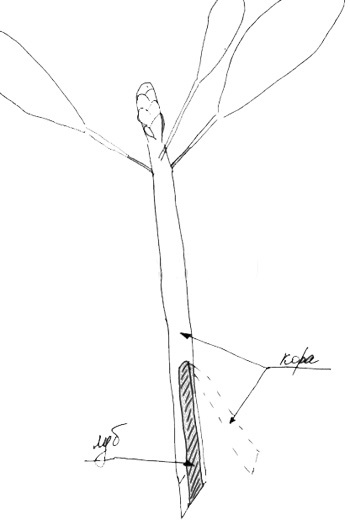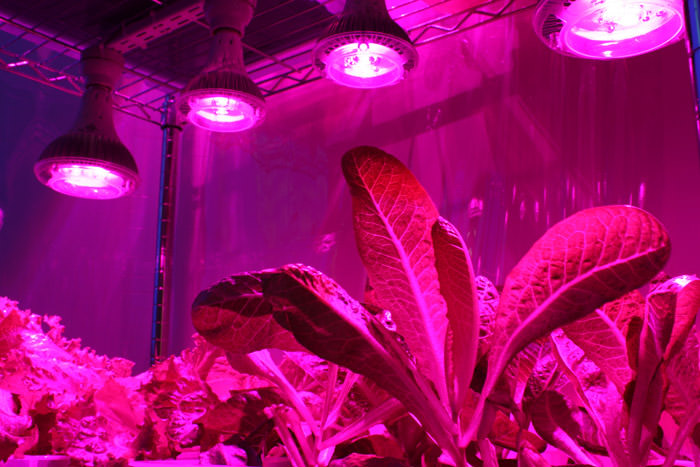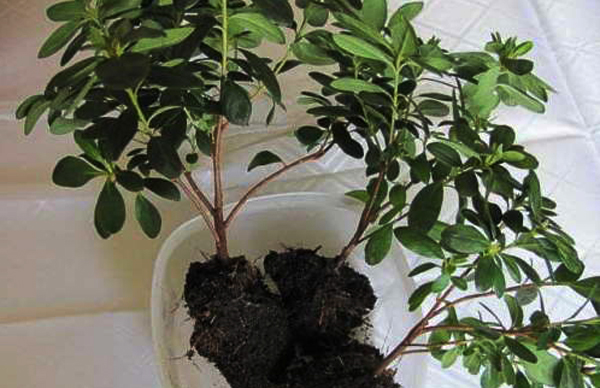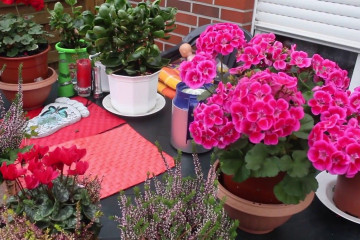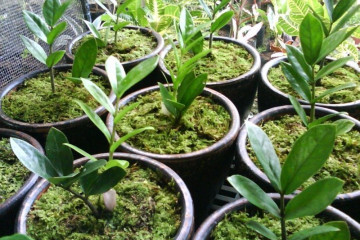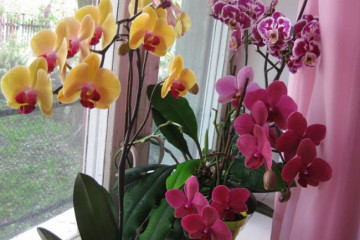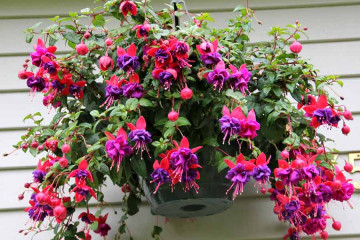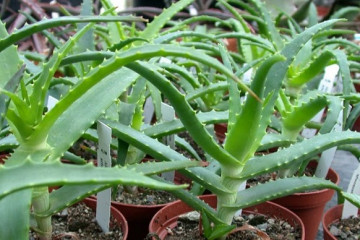How to propagate an azalea at home
Content:
Azalea is a gorgeous looking but difficult plant to grow. It does not tolerate mistakes in care or imperfect conditions. That is why, before breeding it, you will need to carefully study the theory.
How to propagate an azalea at home
In total, there are five ways in which you can propagate an azalea. Each of them is more or less laborious, suitable for a certain season and affects the further survival rate. The reproduction method is chosen depending on the goals pursued and the number of copies that need to be obtained.
How azalea reproduces:
- by cuttings. The most popular method, which is carried out only during the growing season, that is, in the spring. The procedure is laborious, but gives good results. The material is taken from an adult healthy specimen;
- seeds. Reproduction by seeds of any plant is not easy. Most often used by breeders to develop new varieties or to grow a large number of specimens at the same time;
- dividing the bush. The method is used for mature bushes over three years old. This method is suitable for novice florists, has a high degree of survival. The bush is divided into two or more parts, which already have a full-fledged horse system. The key to quick adaptation is the correct composition of the substrate and care;
- vaccination. It is rarely used, only when it is impossible to use other methods, in particular, with complex rooting of cuttings. A stock is taken (a bush to which the grafting will be done) and a stalk about 15 cm long (shoot with an eye). At the junction, oblique cuts are made, the scion and rootstock are applied to each other and fixed with plastic wrap;
- layering. The method shows good results, but is more suitable for garden azaleas. The shoot of the plant is buried in the ground, after a while roots appear in this place.
You can choose a suitable breeding method only by evaluating the initial data: the age of the plant, the growing conditions, the goals pursued.
Propagation by cuttings: advantages and disadvantages
Azalea (lat. Azalea) is one of the few plants that has difficulty propagating by cuttings. From the disadvantages, they distinguish poor survival, the whimsicality of the plant, from the advantages - the preservation of species characteristics, the ability to get several new specimens.
In the first winter, the growth of azaleas must be stimulated, artificial lighting and heating must be created, while maintaining a high level of humidity. If the plant does not begin to actively develop in the first year of life, then it will be very difficult with it.
How azalea takes root: propagation by cuttings at home
Cutting is permissible when the plant is three years old. If you take an azalea that is too young for reproduction, the cuttings may wither before they can take root. If you take an already mature, adult plant, then there will be few nutrients in it, which will also negatively affect rooting.
The second pinching and pruning are carried out next year in March, five new shoots are cut, young shoots are transplanted into new pots with a diameter of 10 cm.The substrate is selected acidic or made independently from peat and coniferous soil, a drainage layer is necessarily made at the bottom.
The step-by-step procedure looks like this:
- Finding and cutting suitable cuttings.
- Soil preparation and greenhouses.
- Making grooves and watering the substrate.
- Soaking cuttings in a root stimulator.
- Planting the material in the ground.
Finally, the plant will get stronger and bloom in about 2-3 years.
How to make cuttings right
For rooting, last year's cuttings from 8 to 10 cm long with several leaves are suitable. The stems of this year are also suitable, as long as they are not lignified.
It's okay if the cutting is used stale. If the material is ordered from an online store, it will calmly endure several days without water and land. If the seedling has time to dry out, it is preliminarily placed in water.
Do not use scissors for cutting, only a sharpened knife or secateurs. The cut is made obliquely. The lower leaves are removed and the upper leaves are cut in half. This is done so that nutrients are not wasted, but are directed exclusively to the formation of the root system. The bottom cut is made under a bud or under a group of crowded leaves.
Part of the bark must be cut off, it is in this place that the roots will appear. The exposed area should be 25% of the remaining bark.
What soil is suitable for rooting
Before rooting the azalea, the seedling is dipped into the root stimulator for 5 hours. Heteroauxin will come to the rescue, two tablets of which must be diluted in 1 liter of water. You can also use zircon or root root.
Indoor rhododendron requires a special soil composition. For reproduction, loose acidic soil is used. The processes are buried 2 cm at a distance of 3-4 cm from each other or according to the 4 × 4 scheme. Universal soil for propagation and cultivation is not suitable, it is necessary to find a special mixture for azaleas / rhododendrons or poorly decomposed peat.
Moisture during rooting
Rhododendron loves high humidity. Watering is done moderately as the soil dries up. If you're lucky, the seedlings will take root in a month. The appearance of its own shoots speaks of good survival rate. If this does not happen, most likely the sprout will die in the near future.
The breeding season for azaleas at home lasts from March to October. Any manipulations can be carried out only after the plant has faded. For better growth, the seedlings are covered with a jar or film, you can spray. Once a week, the greenhouse is removed and the plant is ventilated.
After rooting, the sprouts are gradually accustomed to the dry air of the apartment. To do this, the film is removed from the seedlings first for 2-3 hours, then for 4-5 hours, etc. After transplanting the azaleas into separate pots, they are again covered with a film for two weeks so that they quickly and painlessly take root.
Temperature and lighting
The lightest and warmest place in the house is used for reproduction. For successful rooting, an air temperature of about 25 ° C must be observed. There should be no drafts in the room, while the air should not stagnate, therefore, the room is periodically ventilated. If possible, the bottom of the pot is heated to 27 ° C.
Growing from seeds: what is good about this method
Growing an azalea from seeds is no less laborious process. The method has the advantage over all the others in that any desired number of copies can be obtained from scratch at the same time, which is good for production scales. If the seed has sprouted, then the seedlings will appear in two weeks. The main condition is fresh quality seeds and suitable growing conditions.
This method has its own nuances. For example, three seasons must pass before the plant is planted in open ground.
How to choose the best seeds
You need to buy azalea seeds in trusted stores that have quality certificates for all products on sale. The packaging should not have defects, tears, wrinkles.
The following parameters should be indicated on the package:
- the number of seeds;
- shelf life;
- manufacturer.
The seeds can be harvested by yourself. To do this, you must wait until the end of the flowering period and open the five-leafed box. The seeds are small and elongated, each from 0.5 to 2 mm long.
The time for collecting the material is the end of autumn. The seeds should ripen well, turn dark brown, while the capsule remains green. After collecting, they are wrapped in paper or cardboard for several days until they are completely dry.
What should be the soil for planting seeds
Seeds are sown in the soil with a top nutrient layer or laid out on peat tablets. Sowing period March-April. You can start breeding azaleas in February, then additional lighting will be required to create a daylight hours lasting 12 hours.
How to Grow Lush Azalea from Seeds? Sun and moisture are prerequisites for seed germination. If a greenhouse effect has been created over the growing vessel, then the glass or film is periodically removed for ventilation. In order not to overmoisten the seeds, it is better to irrigate the soil from a sprayer, using a special composition: dilute 4 g of oxalic acid in 10 liters of settled water.
For sowing, use any available container. The bottom of the flowerpot is equipped with drainage holes.
The stores sell ready-made soil mixture for rhododendrons. You can make it yourself from the following components:
- deciduous land;
- sod land;
- peat;
- sand;
- humus.
All components are taken in the same proportions and pre-disinfected in a solution of potassium permanganate, you can add a baking powder.
The most important parameters for the soil:
- water permeability;
- air permeability;
- saturation with minerals;
- ease;
- looseness;
- acidity pH 4-4.5.
Temperature
Standard home conditions are suitable for growing seeds: an air temperature of 20 ° C and bright light. In this situation, the seeds will sprout in 2-4 weeks, the sprouts will appear unevenly. To stimulate growth, it is recommended to spray them with a solution of zircon or epin.
Humidity
The sprouts must be in high humidity conditions, so they are covered with transparent material to create a greenhouse effect.
To avoid flooding the seeds, the bottom watering method can be used. Thus, the sprouts receive the necessary nutrition, and the root system is stimulated.
How to properly transplant young azaleas into a separate pot
Rhododendron tolerates transplantation well.If young azaleas begin to feel unwell after changing the pot, it is most likely due to poor soil or inappropriate external conditions. The leaves will turn yellow and fall off if the soil lacks minerals or the soil is not acidic enough.
Azalea is transplanted when several true leaves have appeared on the shoots, and then every year. Adult specimens are transplanted after flowering every three years.
You will need the following inventory:
- a pot with a diameter of 10 cm for the first planting or one size larger than the previous one for the annual;
- a sharp knife (for trimming dried leaves and buds);
- pine bark, dry moss, baking powder (additive to the substrate);
- charcoal (for soil deactivation);
- drainage;
- pure water;
- solution of zircon or epin to stimulate the growth of the root system.
Particular attention is paid to the roots. To avoid damaging them, the azalea is transplanted together with an earthen clod or by the transshipment method. There is a special microflora on the roots of the azalea, so the plant will die if it is damaged. You should also be careful with the root collar, if it is buried in the soil, the plant will wither.
After transplanting, the soil is watered abundantly, then an interval of four days is maintained.
How to propagate an azalea correctly? Light, moisture, acidic soil and patience are what you need to get new rhododendrons at home. Also, a guarantee of good germination of seeds and rooting of cuttings is high-quality material, so it is better to spend time looking for them, and in a few months the azalea will delight the eye with its lush crown.
